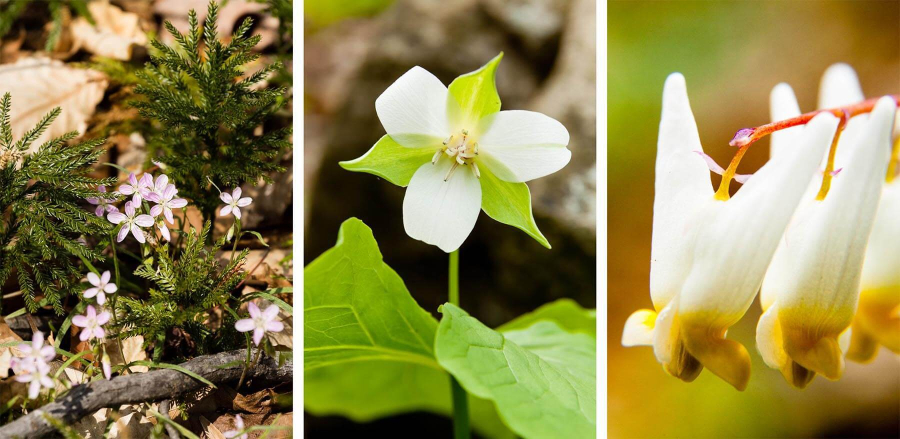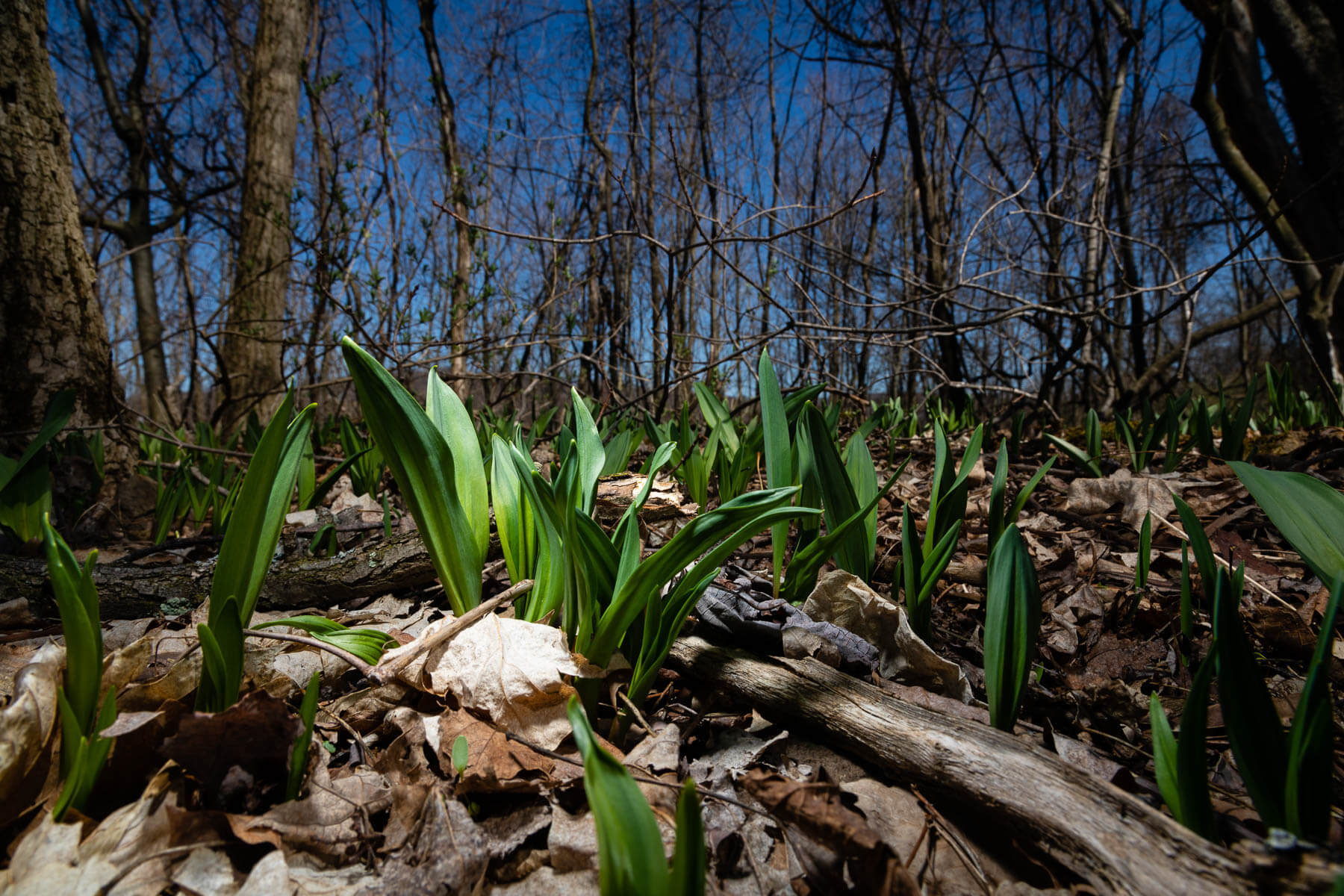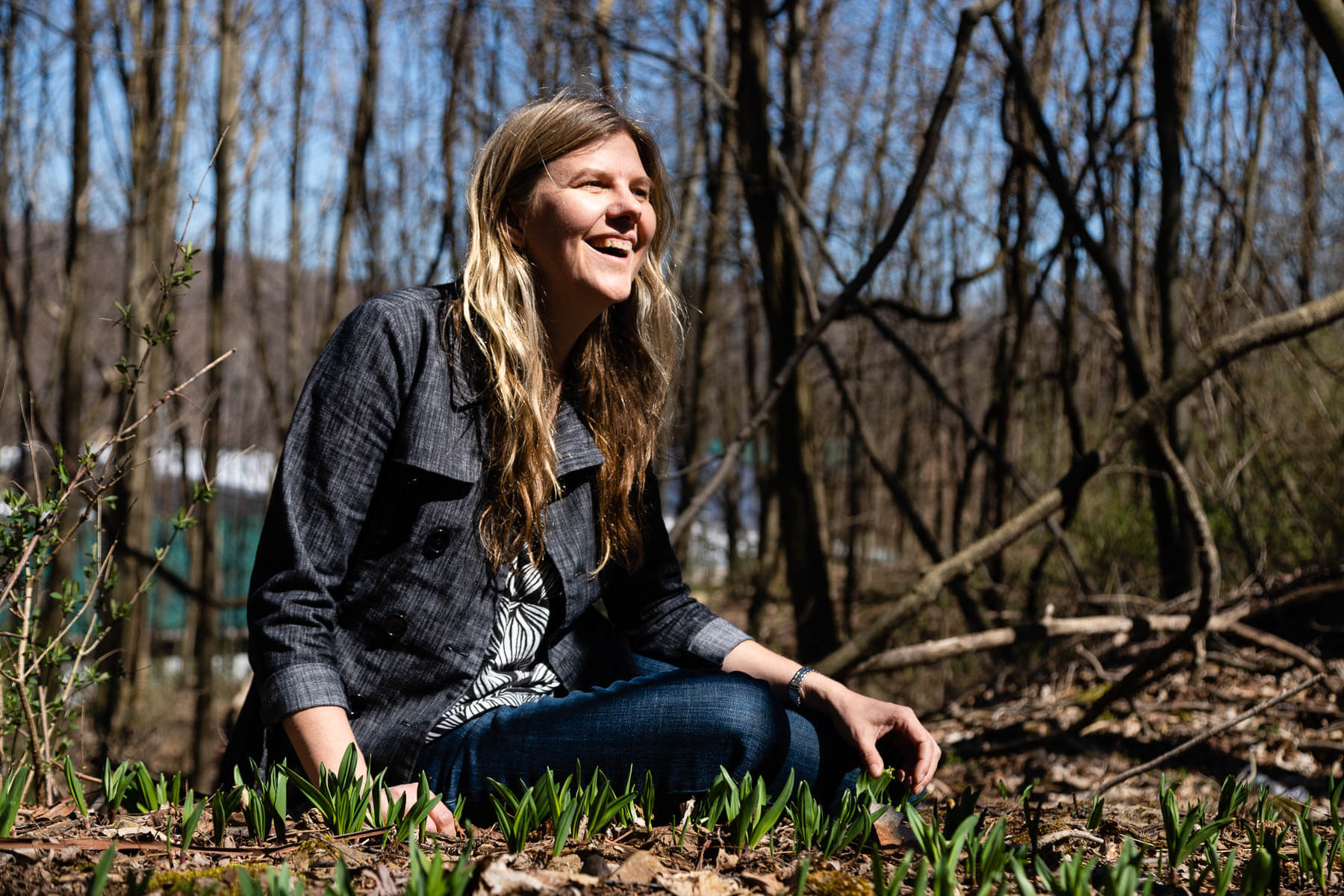Fairylands and pollinators
The short lives of spring ephemeral flowers show larger connections

Blink, and they’re gone. For a short spell each year, our woodlands are not the bare ground they have appeared to be throughout the winter. By the time we start to notice buds appearing on trees, fast-growing wildflowers of breathtaking shapes and colors have popped up seemingly out of nowhere.
These flowers, called spring ephemerals, do the majority of their growing during the winter and are just waiting below the surface to pop up and transform the woods to a fairyland. Spring ephemerals—ephemeral meaning that they last for a short period of time—appear when spring begins and before the tree canopy returns. Once shade starts to cover their woodland home or temperatures get too warm, they disappear.
Foraging the forests
Botany and flower lovers are not the only ones on the hunt for these short-lived wild natives: many of these plants are used for food, medicine or commerce. Finding the culinary, cultural and aesthetic use in nature can be an excellent way for people to be exposed to the outdoors, to pass on traditions and to spend time with families.
A delicate white ephemeral striped with vivid pink and sporting bright yellow central spots is aptly named the “spring beauty,” but foragers know it by a different moniker: “fairy spuds,” so called for the rounded, edible roots resembling tiny potatoes.
Ramps, a member of the onion family, are an incredibly popular and highly anticipated spring arrival. A quick search reveals pages of recipes for cooking ramps and poetic descriptions of their garlic-meets-onion-plus-adventure flavor. They have become quite popular in restaurants, and with good reason. A short season, sense of novelty and homegrown flair give the ramp a spot of honor among early spring arrivals.

With any craze, however, comes a caution. Bloodroot has been used for years as a medicine in very small doses for throat infections, skin maladies and breathing issues, but a plant’s existence as part of the “natural” world does not necessarily mean it is safe. Ask Sunshine Brosi, professor of biology and ethnobotany at Frostburg State University. “Bloodroot is actually a member of the poppy family. It is really very highly toxic.”
Ramps are in danger of overharvesting, and can be sensitive to stresses. Though some foragers collect up to 50 percent of a patch and see it reproduce year after year, in other areas of the watershed just a ten percent harvest can stress a patch into not reproducing the next year. Brosi agreed with and paraphrased James Gustave Speth, co-founder of the National Resources Defense Council, in saying, “I used to think the worst environmental problems were habitat loss and climate change. It turns out to be apathy and greed. To fix it, you need a spiritual transformation.”
Habitat loss and overharvesting have had a profound effect on the ramps. There are actually two varieties of the ramp: the Allium tricoccum and the Allium burdickii, better known as the broad and narrow-leafed wild leek. The broad leaf is fairly stable in the Northeast, while the narrow leaf is under review in the area and possibly extirpated (it no longer exists) in the state of New York. If you do not know the difference between the two while foraging, you could be doing significant damage.
Trout lilies, whose markings on their dark green foliage resemble the body of the native brook trout, are another edible ephemeral whose leaves and flowers are used in salads. Trout lily corms (the part of the plant that is like a bulb) have a cucumber-like taste and medicinally are used as a contraceptive and emetic (something that will induce vomiting).
Yet a trout lily is not the easily renewable resource that it appears. It can take a trout lily up to eight years to reach its flowering stage, when it produces that single flower. Brosi recommends against eating or harvesting spring ephemerals because most people do not have a true understanding of their wider connection to the ecosystem.

A great way to enjoy these plants on your plate or in your flower vase without causing damage to the ecosystem is to grow them yourself in your own garden.
If you are going to forage—which many see as a rewarding and exciting way to experience nature—know how to do it responsibly. Brosi recommends asking yourself three questions before foraging in the wild:
- Do I know what lands I’m on and whether harvesting is legal in this area?
- Do I know what the endangered look-alikes are for the plant I’m harvesting, and how to tell them apart?
- Do I know what other species—plant, insect and animal alike—depend on this species?
An interconnected system
The ephemerals are important sources of food for early pollinators, particularly our native bees. Honeybees were actually brought over from Europe to help pollinate our extremely common but nonnative food sources such as potatoes, tomatoes and most berries. Many native pollinators tend to be specialists that need particular flowers, and vice versa. Our native bees, butterflies and certain bee flies are out and looking in the early spring, and their single source lies in the spring ephemerals.
The mining bee often visits the spring beauty, while the trout lily bee is associated with the plant of the same name. The connections on a small scale in our ecosystem are interwoven with the larger world, and breaking any of these threads can lead to a breakdown of the ecosystem on a larger scale.
Spring ephemerals play an astonishing role in the ecosystem, but what makes them special can also make them more vulnerable. While many plants and animals are threatened by roads and neighborhoods that cut through their habitat, fragmentation can threaten spring ephemerals on an incredibly small and localized scale. Many ephemeral wildflowers—including trout lilies, bloodroot and the charming Dutchman’s Breeches—have seeds that are dispersed by ants rather than by bats, birds or the wind. On average, ants only move these seeds about six feet from a host plant. If these plants and ants are separated—whether by a new building that destroys an entire habitat or by a single individual that uproots a flower patch—it is unlikely the species will be able to reproduce.
Invasives also play a role in stamping out our native species and disrupting the interwoven ecosystem. Garlic mustard is a culinary Asian herb that escaped cultivation and now blankets much of the understory throughout the Northeast, shading out native plants. The West Virginia White butterfly, an iconic species to see softly floating amongst the forest branches in spring, has hit a “population sink” with the invasive garlic mustard plant. The butterfly generally lays its eggs on plants like toothwort, another early spring arrival. The garlic mustard tricks the white butterfly into thinking the mustard is a suitable host plant, but there is a chemical in garlic mustard that kills off the butterfly’s eggs. The West Virginia White butterfly is now completely extirpated in the state of New Jersey.
A larger story
People are as connected with the natural world as the pollinators with their flowers, even if we do not realize it, and our own unique backyards are connected to each other. At Point Lookout State Park in Maryland, where the Potomac River meets the Chesapeake Bay, you can cross 11 miles of brackish water to Smith Point, Virginia. Four hundred miles northwest, where Maryland and West Virginia meet at the Fairfax Stone, the Potomac is a fresh water spring so narrow that a child can stand on each bank of the river at the same time. You’ll find spring beauties unobtrusively gracing the banks of each if you look down in early spring, and both lie within the Chesapeake Bay watershed.
The rules for foraging and ephemeral-finding can themselves be expanded out for humanity as a whole. As people go through lives taking action in the world—planting, harvesting, driving, building and polluting—we can ask ourselves, do we know how this is connected?

Comments
There are no comments.
Thank you!
Your comment has been received. Before it can be published, the comment will be reviewed by our team to ensure it adheres with our rules of engagement.
Back to recent stories